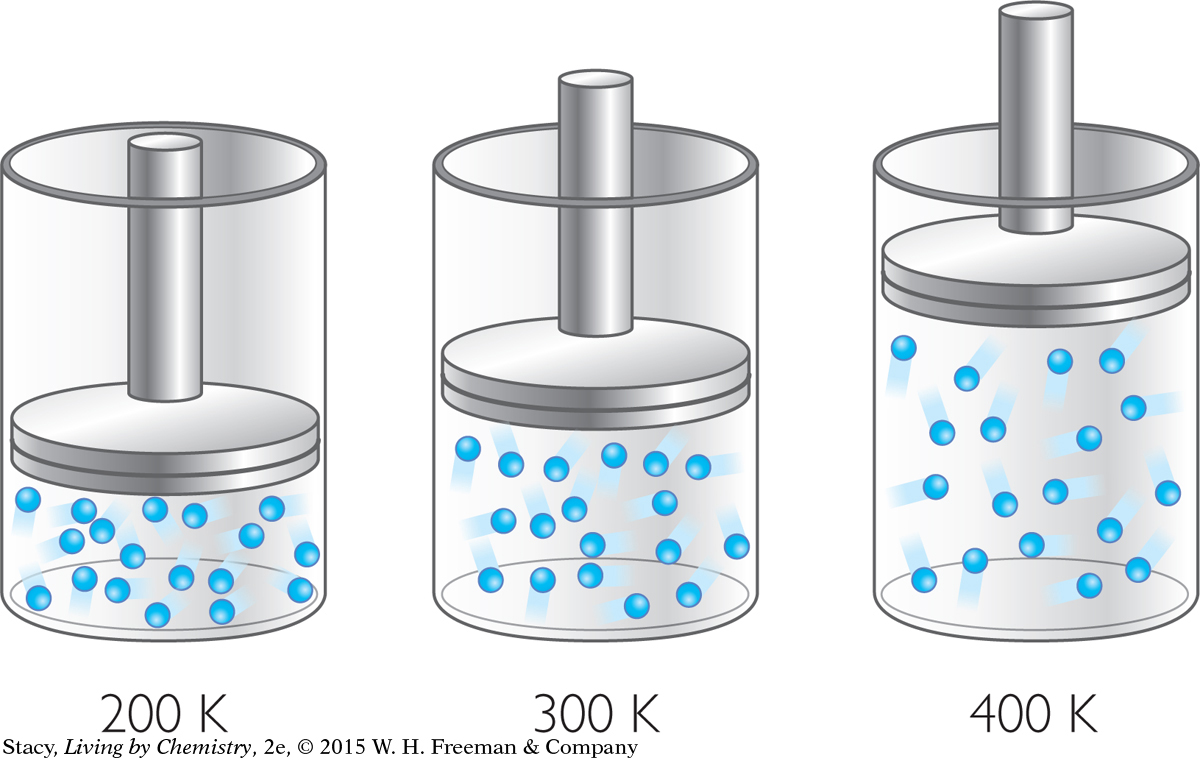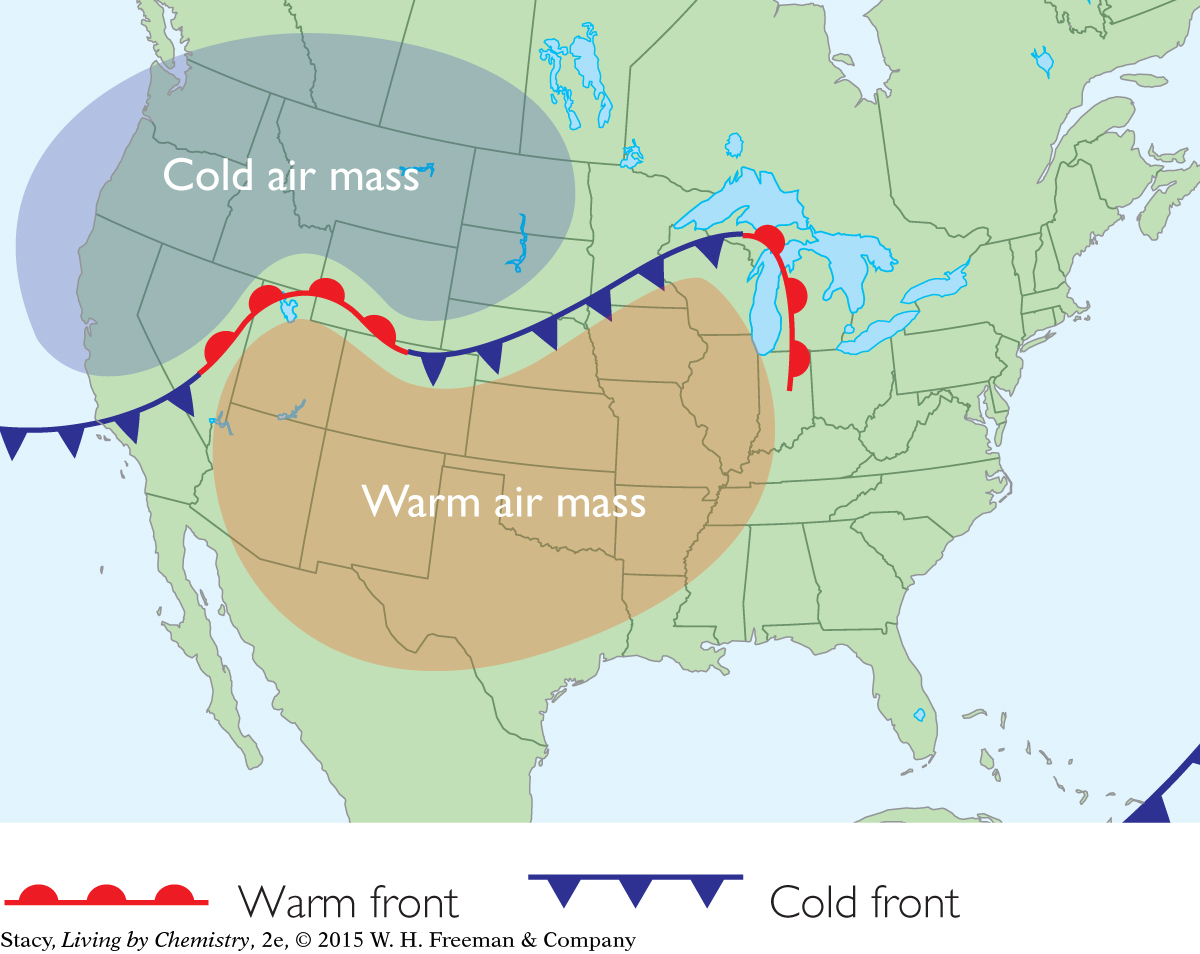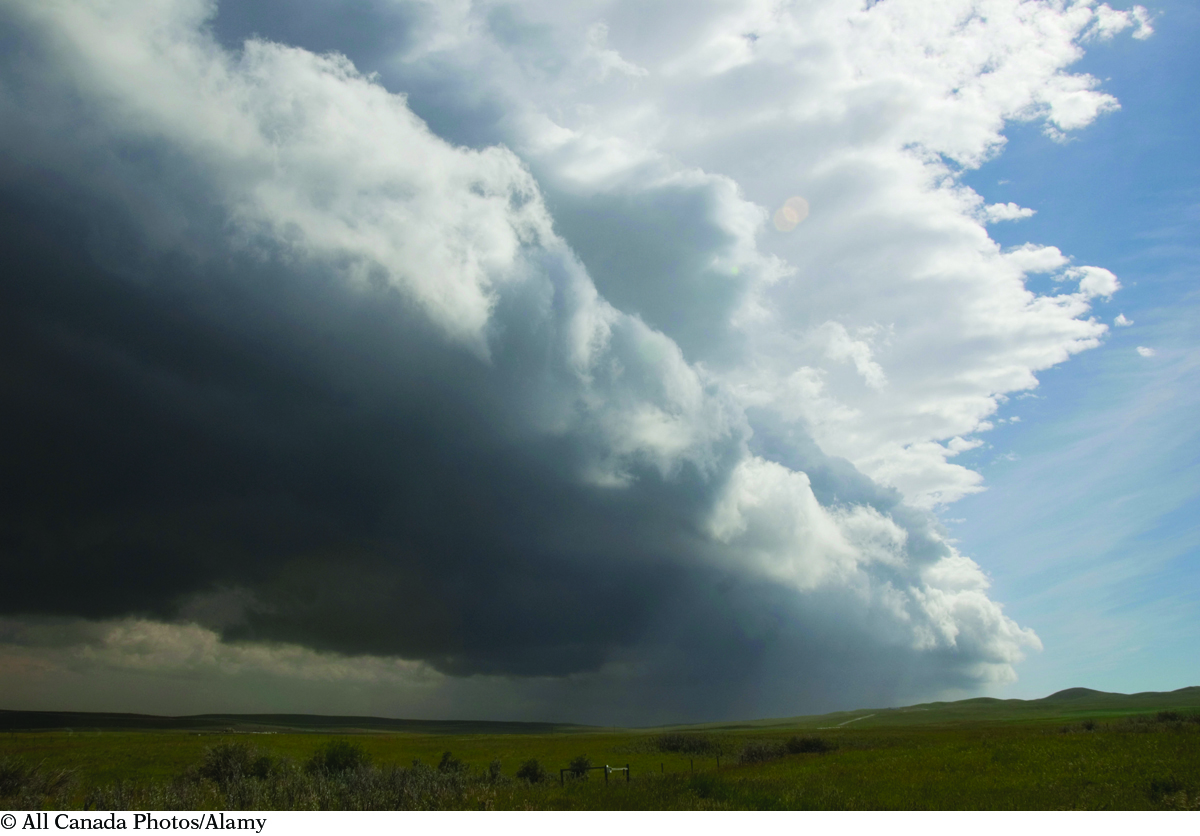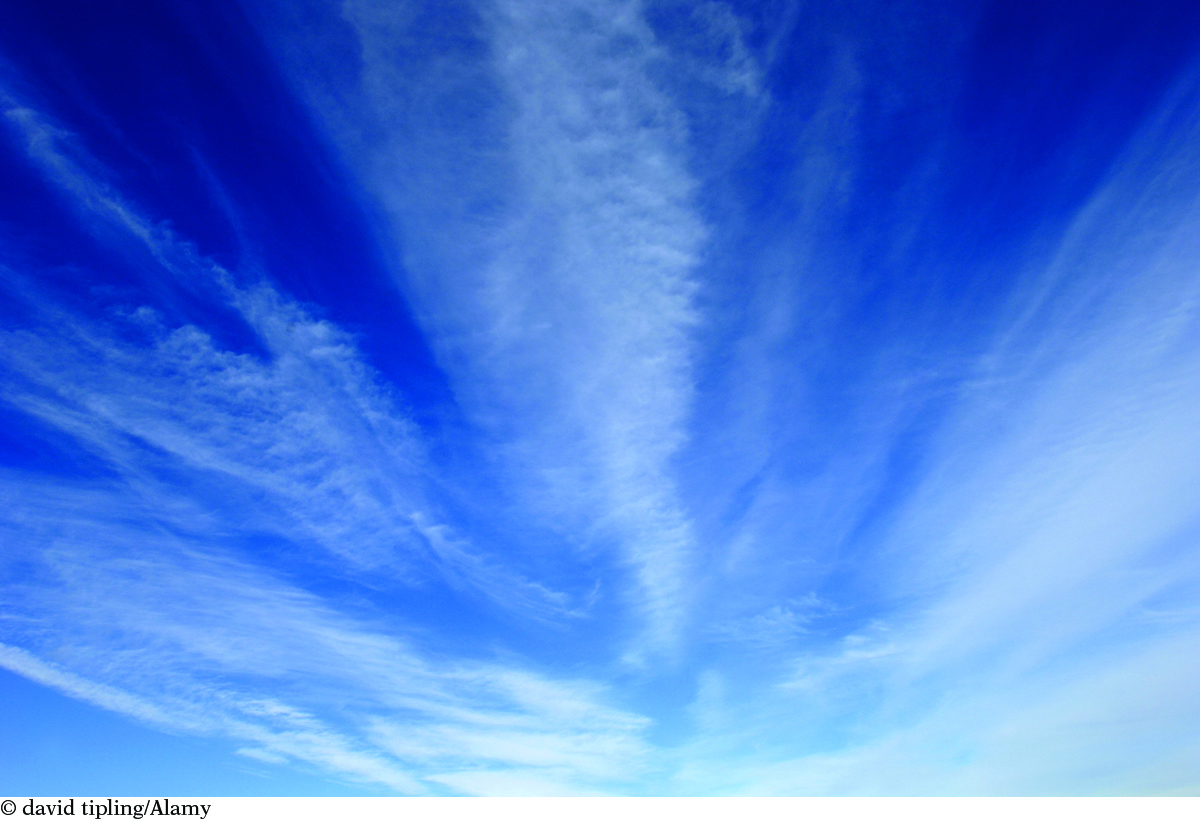LESSON 55: Front And Center: Density, Temperature, and Fronts
THINK ABOUT IT
Meteorologists have identified large masses of air that have a consistent temperature and water content. These air masses form in particular locations on Earth’s surface and cover thousands of square miles. They have a great influence on the weather. Weather fronts occur at the boundaries of these air masses, where warm and cold air meet.
How do weather fronts affect the weather?
To answer this question, you will explore
Air Density
Weather Fronts
Relationships between Weather Variables
Air Density
EXPLORING THE TOPIC
Air Density
SMALL AIR MASSES
To understand a large mass of air on Earth’s surface, it is helpful to examine the behavior of a small sample of gas. When a gas sample gets warmer, it expands to fill a larger volume. Notice that as the temperature increases, there are fewer molecules per milliliter of volume in the cylinders. The number of molecules does not change, but the spacing between those molecules does change. The density, D = m/V, decreases because the same mass, m, is divided by a larger volume, V, resulting in a smaller number.

LARGE AIR MASSES
In Unit 1: Alchemy, you found that every substance has a specific density. For example, the density of gold is 19.3 g/mL, and the density of water is 1.0 g/mL. This is true only at a specified temperature. The density of a substance changes as the temperature changes. For liquids and solids, this change in density is very small. For gases, the change is much larger.
When air gets warmer, it expands as well as rises, because warm air is less dense than colder air. This is what happens when a warm air mass meets a cold air mass. This fact is key to understanding weather fronts and storms.
Weather Fronts
Weather Fronts
WARM AND COLD AIR MEET
When a cold air mass meets a warm air mass, two different weather situations can arise. These two situations are shown in the illustrations and are described here.



COLD FRONTS

A cold front occurs when cold air overtakes warm air. The warm air is suddenly pushed up as the advancing cold air forces its way underneath it. The warm air cools at higher altitudes, which causes water vapor in the air to condense into tiny liquid cloud droplets. The clouds associated with cold fronts can be seen directly in the area of the advancing front. They form quickly and are often thick, puffy clouds, like the ones seen before thunderstorms. Heavy rains are often associated with cold fronts.
WARM FRONTS

A warm front occurs when warm air overtakes cold air. The warm air gradually flows up and over the cold air because the warm air is less dense. The warm air cools at higher altitudes and water vapor condenses to form clouds. The clouds associated with warm fronts usually form ahead of the place where the air masses meet. You will see high, wispy clouds when a warm front is still hundreds of miles away. As the warm front gets closer, the clouds get thicker and lower, and precipitation falls. Steady, light rain over a large area is associated with warm fronts.
Relationships between Weather Variables
Relationships between Weather Variables
NATURE CONNECTION
NATURE
CONNECTION
Cold fronts are responsible for squalls, tornadoes, strong winds, and other destructive weather.

The clouds, high- and low-pressure systems, precipitation, and the jet stream can be added to a weather map that contains some fronts. Take a moment to draw some conclusions about how these weather variables relate to one another.

Fronts occur at the boundaries between warm and cold air masses.
Clouds and steady, light rain form ahead of a warm front. Clouds and heavy showers form at and behind a cold front.
On weather maps, Ls are closely associated with fronts while Hs appear to be away from the fronts. Hs represent areas of high pressure and are associated with clear skies. Ls represent areas of low pressure and are associated with storms and cloudy skies.
When air masses form over Earth, they get their properties from the area beneath them. In other words, if an air mass forms over water, it will tend to be full of moisture; if it forms over land, it will tend to be dry.
LESSON SUMMARY
LESSON SUMMARY
How do weather fronts affect the weather?
KEY TERM
air mass
When a cold air mass and a warm air mass meet, the warm air rises and layers on top of the cold air. This is because warm air is less dense than cold air. A cold front occurs when a cold air mass overtakes a warm air mass, and a warm front occurs when a warm air mass overtakes a cold air mass. Clouds and precipitation occur with both warm and cold fronts. Warm fronts produce steady, light rain, and cold fronts produce sudden, heavy showers.
Exercises
Reading Questions
Explain why hot air rises.
Explain the difference between a warm front and a cold front.
Reason and Apply
Suppose you have two gas samples in flexible containers with the same outside pressure and the same amount of gas in each. Sample A is at a temperature of 25 °C and Sample B is at 5 °C. Which of these statements is true?
Sample A occupies a larger volume and has lower density.
Sample A has higher density and a smaller volume.
Sample B has molecules moving at a greater average speed.
A cold front is approaching your hometown and is due to arrive tomorrow. What kind of weather would you expect to observe?
A warm front is approaching your hometown and is due to arrive tomorrow. What kind of weather would you expect to observe?
The continental polar air mass overtakes the maritime tropical air mass.
What kind of front develops?
What happens to the air masses when they meet?
What sort of weather would you expect and where?
Look in the newspaper or on the Internet. Find a recent weather map with at least one warm front and one cold front. - Page 292
Find a warm front on the map. What weather is predicted for tomorrow in the region of the warm front?
What weather is predicted in the direction in which the warm front is moving?
Find a cold front on the map. Describe the weather forecast given for the region near the cold front.
What weather is predicted for tomorrow in the region close to the cold front?
What weather is predicted in the direction in which the cold front is moving?